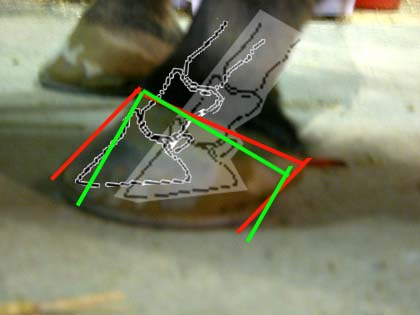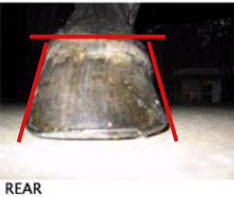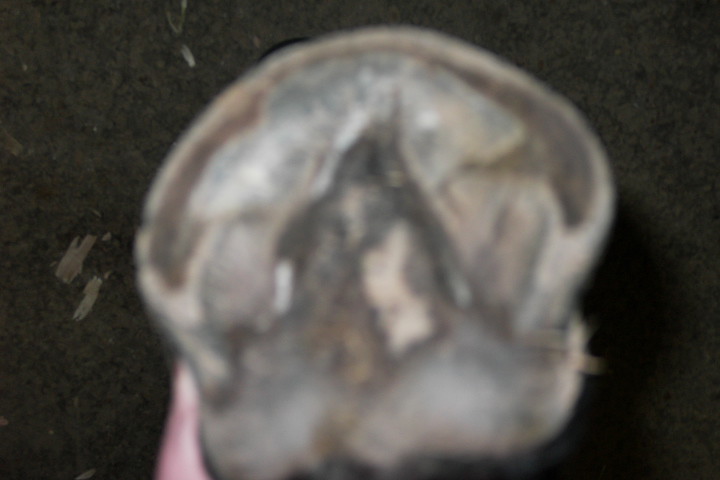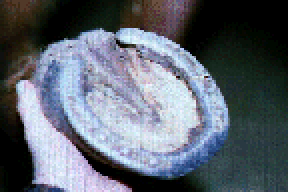Dressager…your pics are ready ![]()
They were a little blurry, so I cleaned them up enough to talk about them. These present a very interesting issue. I think we would all agree that the sole view doesn’t look to bad. I would say general shape isn’t bad, but the protruding bulbs indicate contraction.
However, the side view presents the reality. The toe is long and low as well as the heel. This results in the whole foot moving forward, misplacing the weight bearing forces and forcing the horse to walk on heels that are probably painful (thus he doesn’t fully weight them resulting in contraction, resulting in further pain)…that doesn’t mean that he would exhibit lameness either. The red lines are the current trim with the matching coffin bone alignment to far forward. The green lines and matching (filled in) coffin bone show how the foot should be a little steeper and moved back under the leg.
There is a significant dish in the toe, so we will talk about that. I have incorrectly aligned the coffin bone with the red hoof wall angle(just thought of that and don’t want to redo the pic). Had I correctly aligned it with the top of the hoof wall (where the dish is most indented) it would become evident why there is a dish to the foot. The hoof wall is moving away from the coffin bone at the bottom half of the foot. This is resulting in stretched white line and a toe flare (which I can’t see, but can tell you is there). The laminar attachment at the bottom half of the coffin bone is weak. This is a setup for laminits/founder (mechanical). Some horses go their whole life like this sound, many do not.
Also wanted to add…notice how the top of the hoof wall is close to my “improved” geen hoof angle. While this is not neccessarily a correct angle, it is closer to an ideal than the red lines. The top of the hoof is trying to grow in at a “natural” and optimal angle, but the long toe and flaring take the hoof wall in another direction…resulting in the dished look. This would probably be easy to fix, just by keeping the toe short and addressing the heels.![]()
Proud member of the * Hoof Fetish Clique *





